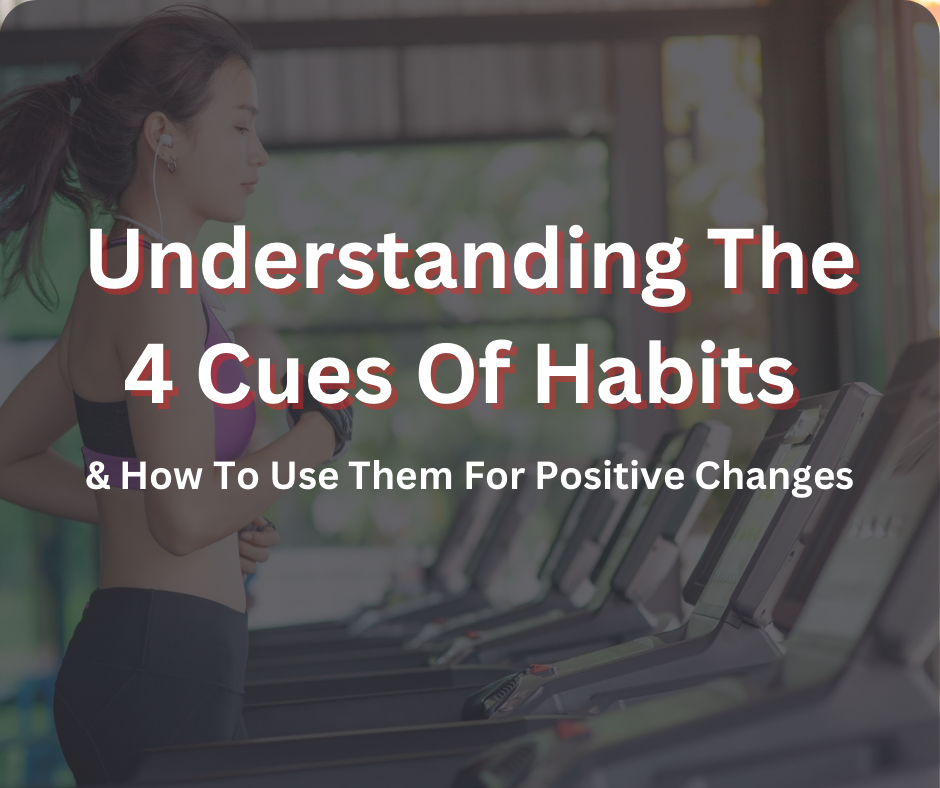Understanding the 4 Cues of a Habit and How to Use Them to Build Positive Behaviours
Habits play a critical role in our lives, guiding our actions and shaping our daily routines. Understanding the four cues that trigger habits is essential for building positive behaviours and breaking unwanted patterns.
The 4 cues of habits are:
The cue,
craving,
response,
and reward.
Let’s dive into each cue and explore simple strategies to leverage them for your benefit.
Cue 1: Trigger
The trigger, or “cue,” is the event that initiates the habit. It can be anything from a specific time of day to an emotional state, a location, or even a person. To establish a new habit, you need to identify a consistent trigger.
Strategy: If you’re aiming to start exercising regularly, choose a trigger that aligns with your daily routine. For example, you could set an alarm for 6 a.m. every morning to go for a run or place your workout clothes by the door the night before. This way, the trigger becomes a natural part of your day.
Cue 2: Routine
The routine is the behaviour that follows the trigger. It’s the core of the habit, the action you take. To create a positive habit, you need to establish a routine that is both enjoyable and repeatable.
Strategy: To build a habit of reading every night, create a cozy reading corner with a comfortable chair and good lighting. Dedicate a specific time each evening for reading, perhaps after dinner or before bed and make it a rule to complete a small number of pages such as 5-10 pages to start with. By making the routine enjoyable, you’re more likely to stick with it.
Cue 3: Reward
The reward is what reinforces the habit, providing a sense of satisfaction or pleasure. It’s the positive outcome that encourages you to repeat the routine.
Strategy: When building a habit of drinking more water, reward yourself after reaching a specific daily goal. You could track your water intake on a chart and treat yourself to a small reward, like a favourite snack or a new book, once you’ve hit your target for the week. This creates positive reinforcement that makes you want to keep up the habit.
Cue 4: Craving
Craving is the desire that drives the habit. It’s the emotional connection to the reward that keeps you coming back for more. By understanding what you crave, you can use it to maintain your habit or replace negative ones.
Strategy: If you’re trying to cut down on sugary snacks, identify the underlying craving—like a sweet taste or a quick energy boost—and find healthier alternatives. You might replace sugary snacks with fresh fruit or nuts, which satisfy the craving without the negative effects. By focusing on what you truly crave, you can redirect your habits in a healthier direction.
With these four cues in mind, you can start building positive habits and reshaping your routines. The key is to identify the triggers that work for you, establish enjoyable routines, find meaningful rewards, and understand the underlying cravings. With a bit of patience and consistency, you can create lasting habits that enrich your life.
